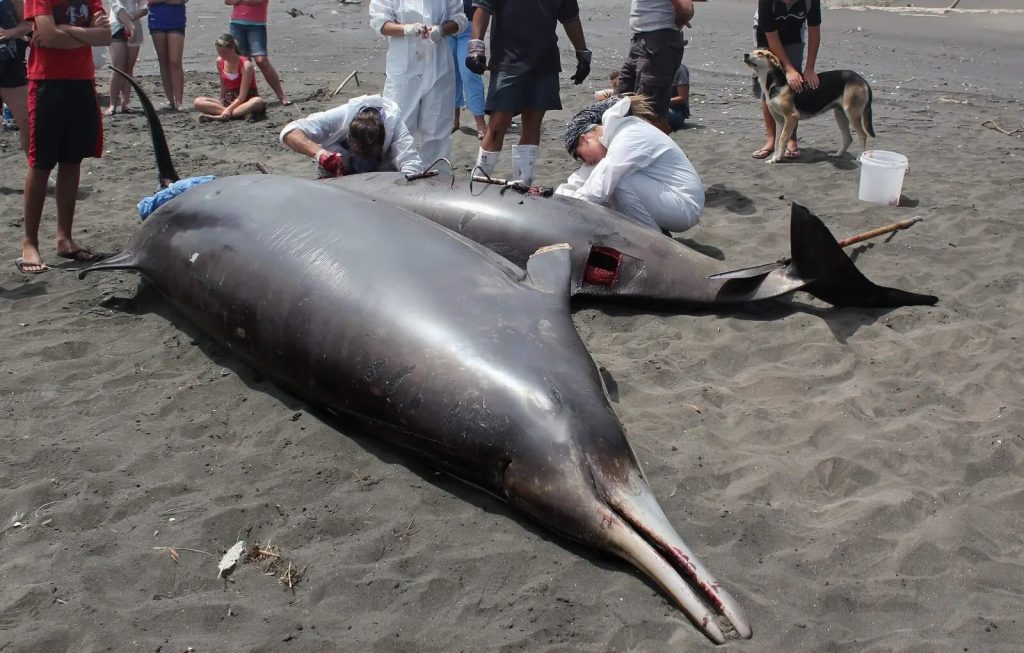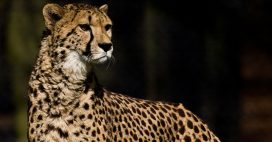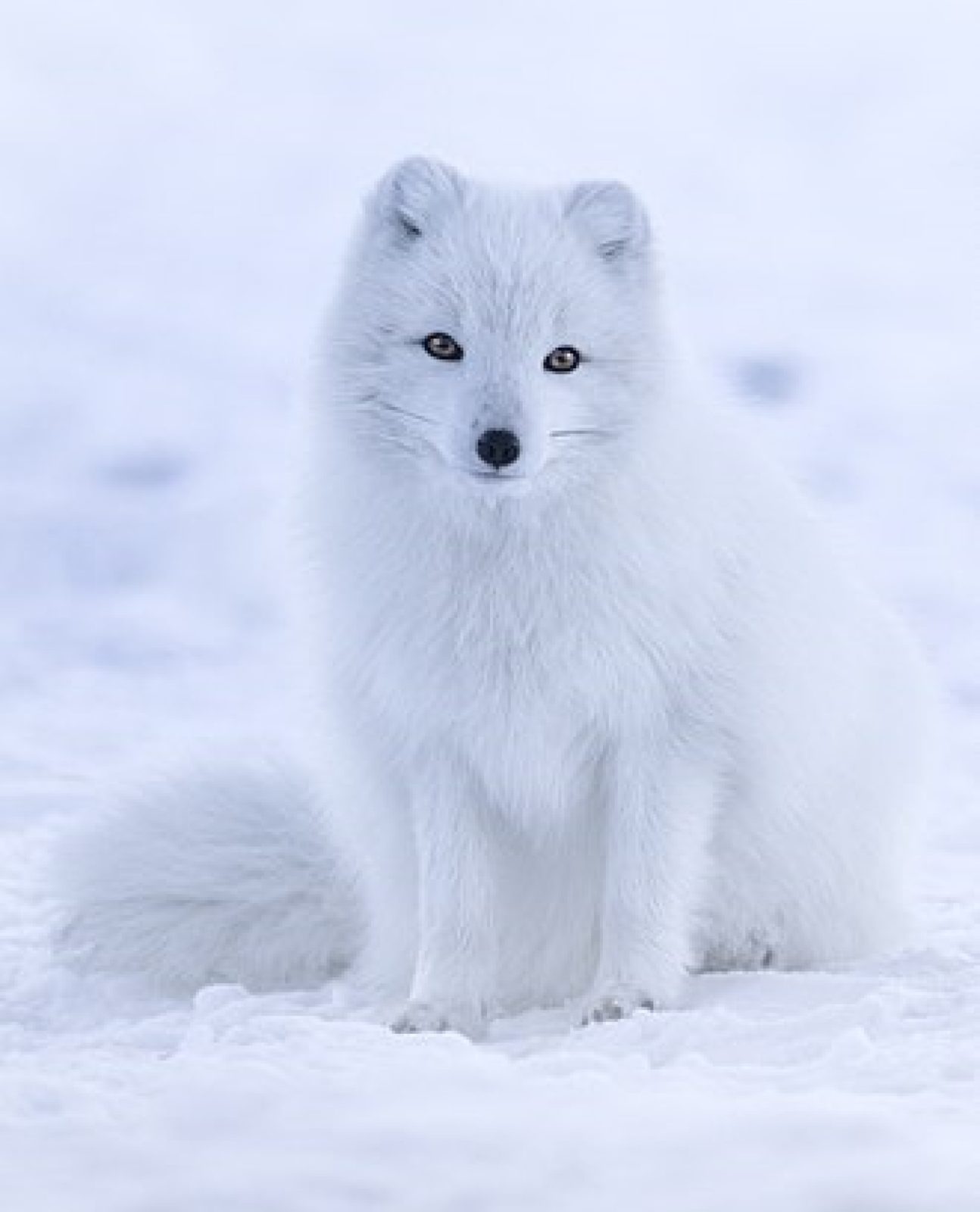
Arctic fox
It is a similar size to other foxes, although generally more rounded, so as to loose as little weight as possible.
The Arctic fox preys on many small creatures such as lemmings, voles, ringed seal pups, fish, waterfowl, and seabirds. It also eats carrion, berries, seaweed, and insects and other small invertebrates.
Natural predators of the Arctic fox are golden eagles, Arctic wolves, polar bears, wolverines, red foxes, and grizzly bears. Having said this, they are also keen scavengers and seem to get alarmingly close to these animals on relatively regular occasions. in places where they occur, rodents such as lemmings can form a large part of an arctic fox families diet. In areas where their range overlaps with red foxes, they often build bigger dens with more exits, so as to be able to escape. One of the issues with reduced snow cover, is the fact that red foxes can seize range formerly used by Arctic foxes.
During much of the year, there is as much as a 90-100 degree difference between the internal temperature of the fox and the air temperature. When inactive, they will curl up into a ball, tucking in all extremities to preserve heat as much as possible.
Primarily monogamous, a pair of arctic foxes are required in order to raise their cubs. In areas where predation is higher, arctic foxes change their behaviour. Here they are often far more promiscuous, possibly so that there are more adults who think the young is theirs and therefore more help for protection, should one of the true parents get killed.
They are the only fox with fur on their feet, so as to avoid even more heat loss. It appears to have originated out of foxes from the Tibetan Plateau.
There are 4 recognized subspecies (beyond the common one)
- Bering Islands Arctic fox, V. l. beringensis
- Greenland Arctic fox, V. l. foragoapusis
- Iceland Arctic fox, V. l. fuliginosus
- Pribilof Islands Arctic fox, V. l. pribilofensis
Shrinking trees, and tuskless elephants – what other effects are humans having?
- Tim
- March 3, 2025

Humans are causing trees to grow smaller, as big trees are more likely to be harvested. In the same way, elephants are being born in some reserves without their tusks,...
In December, the worlds oldest known bird, an albatross, laid an egg in her 74th year.
- Tim
- February 28, 2025
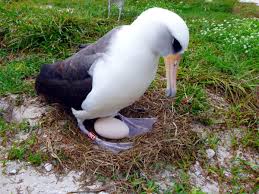
The bird, called Wisdom, is a Laysan albatross was photographed with her current partner and the egg. Normally expected to...
Quiet for a time – trying to solve CPU issues
- Tim
- July 2, 2025
For anyone visiting, I have not gone anywhere. Unfortunately the website has been having a number of issues. We have employed someone to work out what is going on, so...
There is a well known rift between Prince William and Prince Harry, but it is based on an important aspect of conservation
- Tim
- May 9, 2025

Unfortunately, this disagreement, is not restricted to within the royal family, quite to the contrary.
There are many species that it is hard to live alongside - I am not...
Seabird poop is a recipe for coral reef recover after bleaching
- Tim
- May 8, 2025
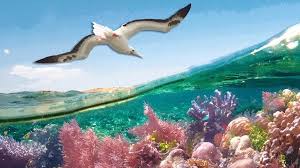
Researchers have found, that reefs which have birds that fly over them, and therefore leave dropping behind, recover faster and show greater resilience after bleaching. Unfortunately, the reason that we...
Wildlife of the river Thames – one of the busiest rivers, with a global city built around it
- Tim
- May 7, 2025
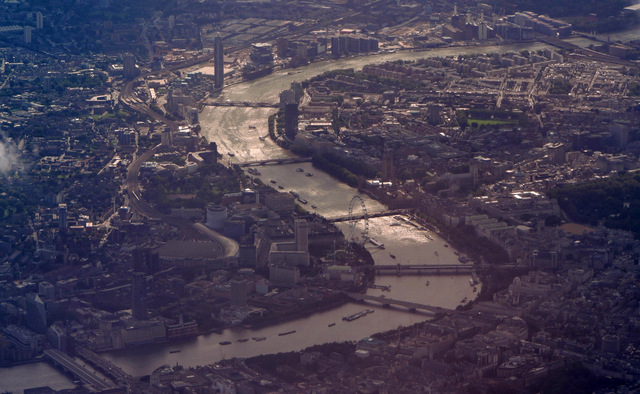
Website update
- Tim
- May 7, 2025
I am well aware, that I have been quiet for some time. I am hoping that, that is, coming to an end. I have been working on the members areas,...
A natural reservoir that formed in the Peruvian Andes behind a glacier, in 1941 broke its bank and killed thousands – climate change is making a repeat more likely
- Tim
- March 26, 2025
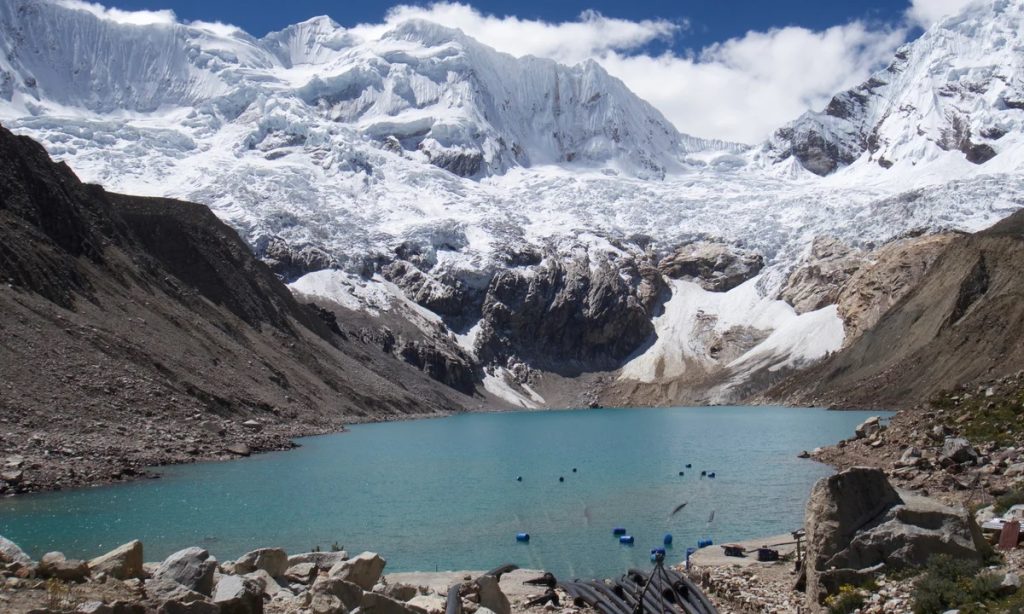
It is estimated that 15 million people live in areas which would be flooded, should glacial lakes collapse. As global warming increases the temperatures in these areas, these glacial lake...
A Ugandan river has turned poisonous
- Tim
- March 25, 2025
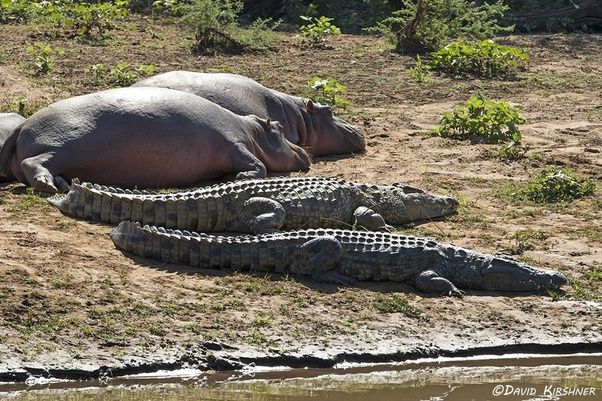
The Nyamwammba river, which runs through the Rwenzori mountains - in...
Shrinking trees, and tuskless elephants – what other effects are humans having?
- Tim
- March 3, 2025

Humans are causing trees to grow smaller, as big trees are more likely to be harvested. In the same way, elephants are being born in some reserves without their tusks,...
In December, the worlds oldest known bird, an albatross, laid an egg in her 74th year.
- Tim
- February 28, 2025

The bird, called Wisdom, is a Laysan albatross was photographed with her current partner and the egg. Normally expected to...
Quiet for a time – trying to solve CPU issues
- Tim
- July 2, 2025
For anyone visiting, I have not gone anywhere. Unfortunately the website has been having a number of issues. We have employed someone to work out what is going on, so...
There is a well known rift between Prince William and Prince Harry, but it is based on an important aspect of conservation
- Tim
- May 9, 2025

Unfortunately, this disagreement, is not restricted to within the royal family, quite to the contrary.
There are many species that it is hard to live alongside - I am not...
Seabird poop is a recipe for coral reef recover after bleaching
- Tim
- May 8, 2025

Researchers have found, that reefs which have birds that fly over them, and therefore leave dropping behind, recover faster and show greater resilience after bleaching. Unfortunately, the reason that we...
Wildlife of the river Thames – one of the busiest rivers, with a global city built around it
- Tim
- May 7, 2025


